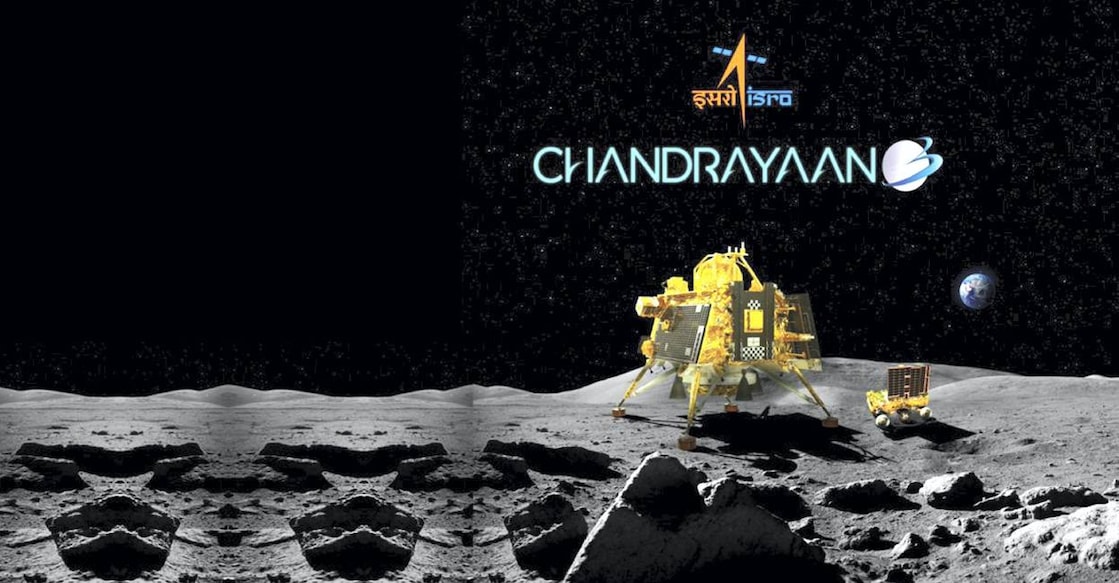India over the moon: Chandrayaan-3 makes soft landing on lunar surface

Mail This Article
Bengaluru: ISRO's ambitious third moon mission Chandrayaan-3's Lander Module (LM) has landed on the lunar surface.
With ISRO confirming the soft landing shortly after 6 pm IST on Wednesday, India has become the first country to reach the uncharted south pole of Earth's only natural satellite.
"We have achieved soft landing on the moon. India is on the moon," said ISRO chief S Somanath.
In elite company
India has now joined an elite group of three nations to have sent a spacecraft on the moon. The erstwhile Soviet Union, the US and China have successfully carried out soft landings on the moon and even getting back to earth samples of soil and rocks from the lunar surface.
"The entire mission operations happened flawlessly as per the timeline," said P Veeramuthuvel, Project Director, Chandrayaan-3.
M Sankaran, Director, UR Rao Satellite Centre, who was part of project Chandrayaan-3, said India has set the bar too high now. "Nothing less spectacular can inspire us in the future," he said.
Sankaran said India's space agency will now try to achieve other missions such as putting a spacecraft on Venus and landing on the surface of Mars.
Why Chandrayaan-3 is special
Not all these missions were successful in their first attempts, with the then USSR succeeding to make a lunar impact on its sixth space flight. The Luna-2 mission of the Soviet Union crashed on the moon on September 14, 1959, making it the first human-made object to hit another celestial body.
Similarly, the National Aeronautics and Space Administration (NASA) could taste success in the lunar missions on July 31, 1964, after 13 failed attempts to crash land on the moon.
NASA's Ranger 7 was a major turning point in the race to the moon as it sent back 4,316 images before crashing into the lunar surface. The photographs helped identify safe Moon landing sites for Apollo astronauts.
China's Chang'e Project started with orbiter missions to the moon, which generated detailed maps of the lunar surface to identify future sites for soft landings.
The Chang'e 3 and 4 missions launched on December 2, 2013 and December 7, 2018 respectively made a soft landing on the lunar surface and operated rovers to explore the moon.
The Chang'e 5 mission was launched on November 23, 2020, landed near the Mons Rumker volcanic formation on the Moon on December 1 and returned to Earth with two kilograms of lunar soil on December 16, the same year.

India's lunar missions began with the launch of Chandrayaan 1 on October 22, 2008 that put a spacecraft in a 100 km circular orbit around the moon.
The spacecraft made 3,400 orbits around the Moon at a height of 100 km from the lunar surface and prepared a chemical, mineralogical and photo-geologic mapping of the Moon.
The orbiter mission, which had a mission life of two years, was, however, prematurely aborted after communication with the spacecraft was lost on August 29, 2009.
A decade later, Chandrayaan-2, comprising an orbiter, lander and rover, was successfully launched on July 22, 2019.
The objectives of the country's second mission to the Moon were scientific studies by payloads onboard the orbiter, and technology demonstration of soft landing and roving on the lunar surface.
However, the space-craft crash landed on the moon on September 6, 2019 due to a software glitch.
The process
According to ISRO officials, for landing, at around 30 km altitude, the lander entered the powered braking phase, and began to use its four thruster engines by "retro firing" them to reach the surface of the moon, by gradually reducing the speed. This was to ensure the lander doesn't crash, as the Moon's gravity will also be in play.
On reaching an altitude of around 6.8 km, only two engines were used, while the two others were shut down, aimed at giving the reverse thrust to the lander as it descends further, they said.

Then, on reaching an altitude of about 150-100 metres, the lander, using its sensors and cameras, scanned the surface to check whether there were any obstacles and then started descending to make a soft-landing.
(With PTI inputs)



